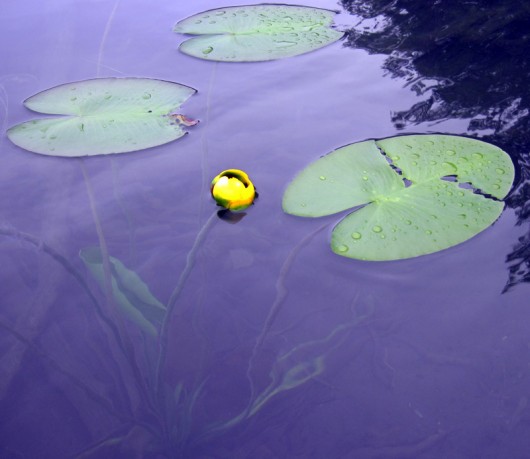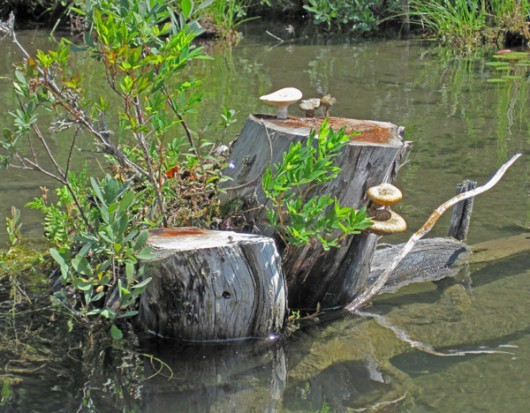 Spatterdock. Cow lily. Yellow Water Lily. Nuphar Lutea. Most of what they are is underwater and not easily seen. They grow from rhizomes buried in the mud at the bottom of shallow sections of Long Lake. The Narrows and Ghost Bay are home to our main colonies. Both are also home to the more delicate fragrant white water lily. And colonies is the right term. The rhizomes spread and pretty soon a shallow lake could be up to its eyeballs in water lilies. The rhizome sends up stalks. Most of the spatterdock leaves, at least the biggest ones, float on the surface. They are perennials–dying back in the fall and sprouting again each spring.
Spatterdock. Cow lily. Yellow Water Lily. Nuphar Lutea. Most of what they are is underwater and not easily seen. They grow from rhizomes buried in the mud at the bottom of shallow sections of Long Lake. The Narrows and Ghost Bay are home to our main colonies. Both are also home to the more delicate fragrant white water lily. And colonies is the right term. The rhizomes spread and pretty soon a shallow lake could be up to its eyeballs in water lilies. The rhizome sends up stalks. Most of the spatterdock leaves, at least the biggest ones, float on the surface. They are perennials–dying back in the fall and sprouting again each spring.
Traditional medicine finds uses for these plants. The stalks are edible, but are sometimes very bitter. The seeds are edible and can be ground into a flour. I recommend taking a pass on Spatterdock muffins, though, unless you’re really really hungry. Beavers and muskrats dive down to eat the rhizomes. Beavers, and all kind of waterfowl, will also eat the seeds. As you would notice paddling around the lake in the summer, one common use of the leaves is as an incubator for frog and bug eggs. Long Lake’s dragonflies and damsel flies often use the leaves as resting places. They helicopter down and don’t even make a dent in the leaf when they land.



